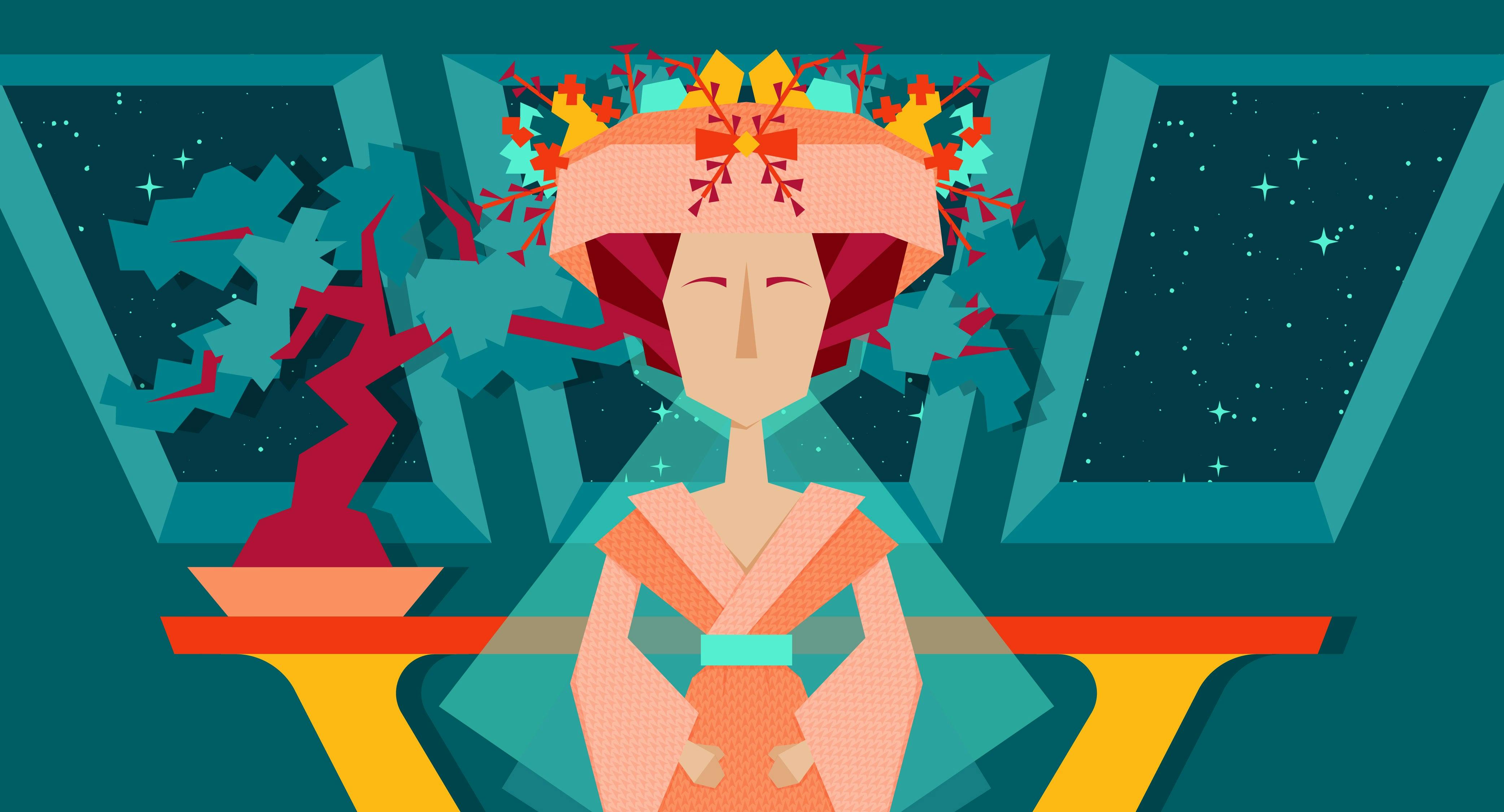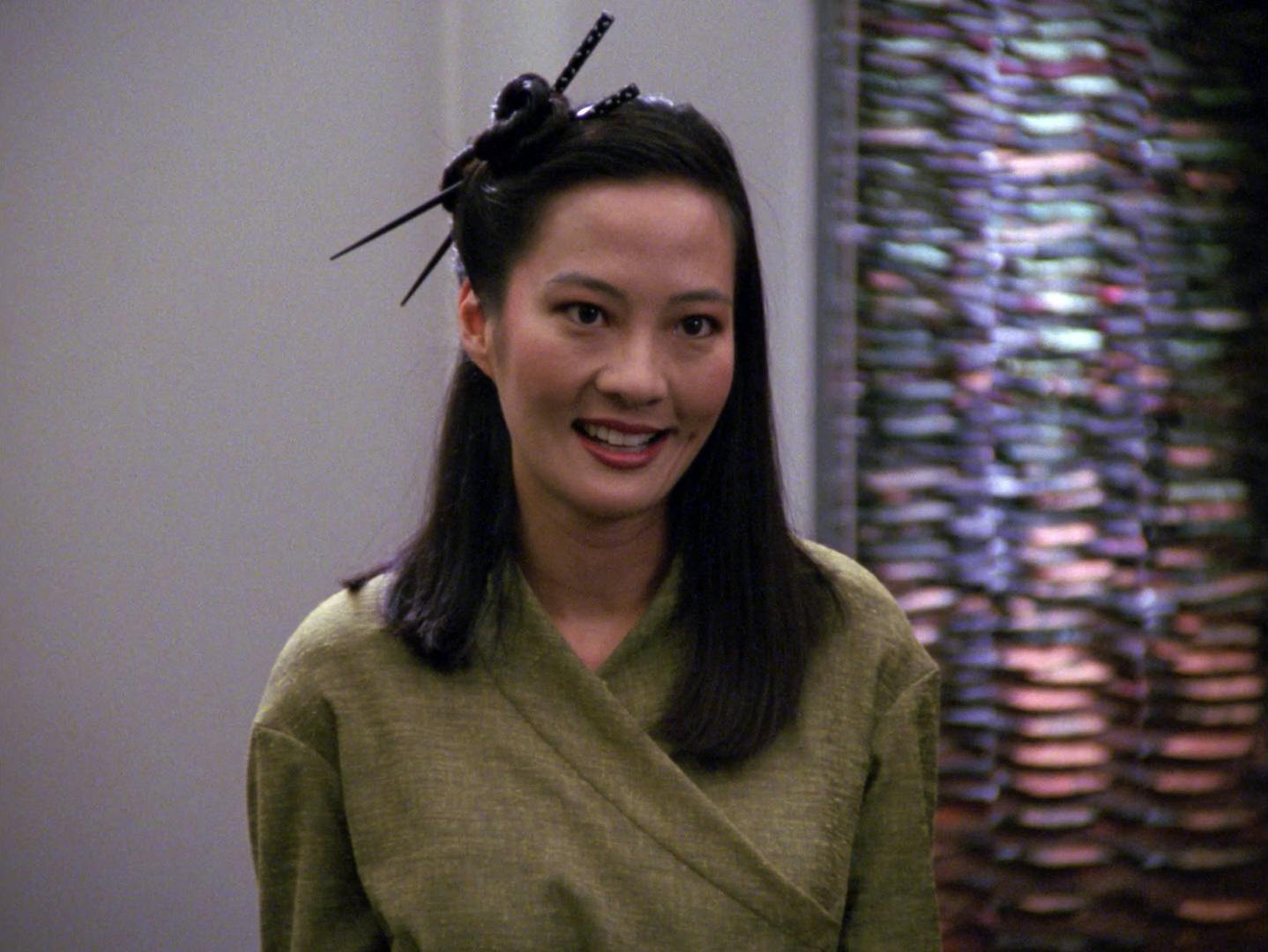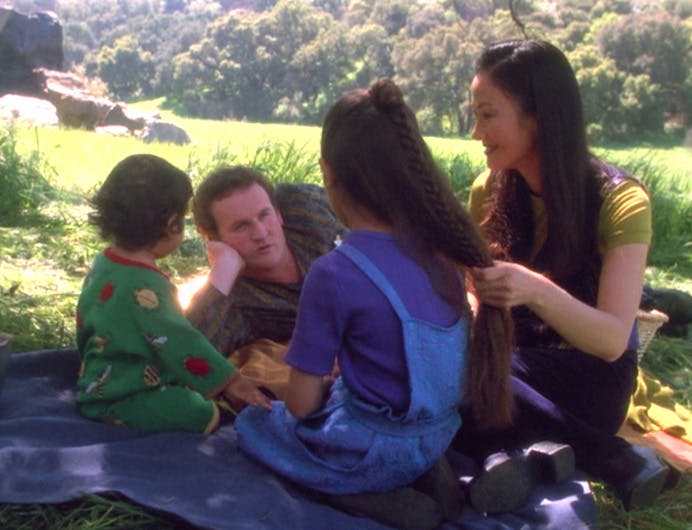Published Sep 23, 2024
From the Enterprise to Deep Space 9: What Keiko O'Brien Taught Me About Belonging
The botanist showed one fan how you can always change your mind about who you want to be and where you want to go.

StarTrek.com
I had an identity crisis when I turned 28. The last time I lived at home full-time was when I was 14; so turning 28 meant that I'd spent half of my life with my family in Taipei, Taiwan, and the other half all over the Western Hemisphere — Switzerland, the UK, and three different cities in the United States. Initially, the moves were for academic reasons, and I always felt like I was a student going to school abroad, while my family lived on the other side of the world.
But my latest move — from Boston to San Francisco — was motivated by professional and lifestyle opportunities. There were no classes waiting for me on the west coast, no .edu email address assigned. In other words, I was becoming a nomadic adult, and the notion unsettled me.

"Data's Day"
StarTrek.com
The year I turned 28 was also the year I rediscovered Star Trek. Though an avid fan of the Kelvin timeline and movies, I wasn't familiar with many of the TV series. I started with TNG, and my love for both the show and the Star Trek universe was propelled to new heights when Keiko Ishikawa O'Brien made her first appearance in "."
It wasn't just that Keiko didn't speak with an accent, unlike most Asian characters on TV in that era, or that she was portrayed by the charismatic and lovable Rosalind Chao. It was the fact that Keiko, like me, struggled to belong.
Soon after her wedding in "Data's Day," Keiko and Miles O'Brien moved to the Deep Space 9 station. A botanist on the U.S.S. Enterprise-D, Keiko finds little demand for her skills on the desolate space station. Her struggle mirrors those of my own, when I transitioned from the Taiwanese school system to an American one, and my previous knowledge — acquired in Chinese — became partially obsolete. Keiko's initial resentment, and the need for her to adapt, are recognizable for many immigrants and expats.
Star Trek: Deep Space Nine | Keiko O'Brien Finds Her Purpose
Taking stock of her situation, Keiko pivots from botanist to educator. It was refreshing to see an adult character grapple with their professional identity in Star Trek, since the franchise is so predicated on everyone having a clearly defined, mission-driven role at work. Keiko's professional transformations are some of my favorite parts of , and she accomplishes many feats as a teacher. She convinces a reluctant Rom to send Nog to her school, and isn't afraid to butt heads with Kira when it comes to teaching about the wormhole. On Deep Space 9, Keiko finds her sense of belonging among her students, and she is deeply committed to bringing human, Bajoran, and Ferengi children together in her classroom.
When the school is forced to close, Keiko goes back to botany with renewed enthusiasm. Her grit and dedication remind me that no decision needs to be permanent, and that you can always change your mind about who you want to be, and — as she leaves Deep Space 9 for an agrobiology expedition on Bajor — where you want to go.

"The House of Quark"
StarTrek.com
As Miles continues to be stationed on Deep Space 9, Keiko returns to be with her family. She is supportive when Miles takes on Dr. Bashir in racquetball, and remains an understanding partner when her husband comes back from an Argrathi jail, rattled and broken.
What moves me the most about Keiko, however, is her steadfastness. Her loyalty is not only to her community and to her family, but also to herself. She doesn't hesitate in calling out Miles for his bigotry toward a Cardassian teenager staying with them, and her conviction singlehandedly leads to the rescue of Miles and Dr. Bashir in "." When her eight-year-old daughter Molly falls through a time portal and reemerges as a young adult, Keiko is the one insisting they not revert her back to a child, because she doesn't think they have the right to alter the life of adult Molly. In addition to her community and her family, Keiko first and foremost belongs to herself.

"Time's Orphan"
StarTrek.com
I've been living in the U.S. for over a decade now, and I sometimes feel like Molly O'Brien, time's orphan. I feel like I've fallen through a Golana time portal and into the wilderness, where I had to navigate school, work, and life without my immediate family by my side.
When I'm home in Taiwan, I feel like Molly on Deep Space 9, restricted, confined, and climbing up the walls. When I'm in the States, I feel like I'm in a lost civilization, where everyone's out for themselves, and I have nothing but my blanket and a knife.
It's a lonely feeling, to belong to two places and nowhere at the same time. As I continue to grapple with my sense of self — between Taiwanese and American, between Chinese and English, between the family I have and the family I found, I am grateful to have Keiko O'Brien as a role model. She showed me that it's OK to be confused, to struggle, and that it's never too late to change my mind. She demonstrated that believing in myself is just as important as investing in my community and loved ones. The character of Keiko is kind, generous, and steadfast, and she taught me that home isn't where the heart is. On the contrary, home is wherever I choose to be.





